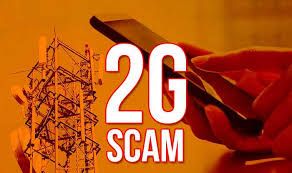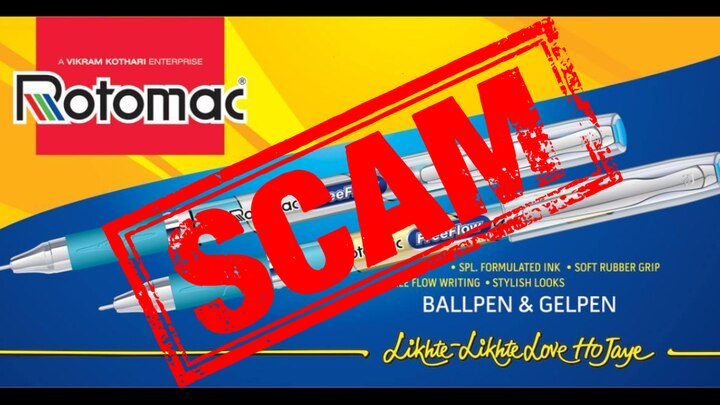Author :Abhishek Yadav, Amity Law School Noida, Amity University Noida.
Introduction
During Prime Minister Manmohan Singh’s second term leading the United Progressive Alliance (UPA) government, a significant political scandal known as the 2G spectrum scam rocked India. This wasn’t just a case of alleged financial irregularities; it became a symbol of a potentially flawed system susceptible to manipulation. The license distribution for 2G spectrum, a radio frequency band essential to mobile phone services, was at the center of it all. In the controversy, it was claimed that these licenses were given out at cheap prices, costing the public coffers a great deal of money and giving rise to allegations of favoritism and corruption.
A political firestorm was sparked by the CAG report. The UPA government was sharply criticized by the opposition parties, who charged it with cronyism and corruption. The public was furious, and there were large-scale demonstrations calling for responsibility.
A. Raja was compelled to step down from his position as Minister of Telecom, and the Enforcement Directorate (ED) and the Central Bureau of Investigation (CBI) were looking into a number of other prominent individuals.One of the most well-known corruption trials in Indian history resulted from the 2G spectrum case. It went on for years, taking many different turns.
What is 2G Spectrum?
Mobile phone networks use a particular band of radio frequencies known as 2G, or second-generation spectrum, to send voice calls and basic data services. In a developing country such as India, where the number of people using mobile phones was rising quickly, telecom companies needed access to this spectrum in order to grow their offerings.
The Allocation Process: Transparency or Turmoil?
Usually, auctions are used by the government to distribute spectrum; this method is intended to guarantee fair competition and optimize state revenue. But when it came to allocating 2G spectrum in 2007–2008, the then-telecom minister, A. Raja, took a different tack. Instead of going through an auction, he granted licenses on a “first-come, first-served” basis.
This approach was immediately questioned. Critics contended that the policy favored companies that had strategically positioned themselves to be at the front of the line, thereby enabling them to obtain licenses at a significantly lower cost than their actual market value.
Background of the Case
Mr. A. Raja served as the Minister of Information and Communication from 2007 to 2009, during the Congress’s tenure in power. He decided to use a fixed price approach and included a condition to favor certain telecommunication companies when allocating 122 licenses of 2G spectrum in 2008. Just as in the fixed price approach, the minister alone sets the price; in this instance, he granted those licenses at a very low cost and did not establish any rules or regulations at the time of granting them.
In addition, he extended the deadline for submitting an application for a license from October 1, 2007, to September 5, 2007. Many companies chose not to apply for a license as a result of this deadline extension, and on January 10, 2008, the day the license was supposed to be issued, he only gave the companies a few hours to submit their checks and other supporting documentation. The companies that A. Raja had favored were prepared with all the paperwork and the check at that point.
The CAG Report: Uncovering Alleged Discrepancies
On November 16, 2010, the India Comptroller and Auditor General submitted a report stating that prior to granting the license, Mr. A. Raja did not seek advice or refer the matter to the Law Ministry, TRAI, or the Finance Ministry.
By March 2010, the Indian Comptroller and Auditor General had completed the report and was prepared to make accommodations for the President of India under Article 151 of the Constitution. The findings of the CAG’s assessment and audit regarding the telecom department’s license and the ministry of communication and IT’s allocation of 2G spectrum were included in the report that the CAG presented. The review covered the years 2003–04 through 2009–10.
According to the report, the government could have lost an astounding ₹1.76 lakh crore (US$25 billion) as a result of irregularities in the 2G spectrum allocation process.
The CAG report pointed out several alleged discrepancies:
- Undervaluing of Licenses: The “first-come, first-served” approach, according to the report, led to licenses being granted at costs significantly less than their market value. Some telecom companies reportedly benefited from this, especially the newcomers with dubious financial standing. The report raised concerns that these companies might not have the infrastructure or experience to effectively utilize the spectrum, potentially hindering the overall growth of the telecom sector.
- Favouritism: Concerns regarding purported favoritism toward particular companies during the allocation process were brought up in the report. Opponents cited the fact that a few of these businesses lacked prior telecom industry experience or had dubious financial standing. This gave rise to suspicions that their selection may have been influenced by political ties.
- Loss of Revenue: The CAG report contended that the government might have lost out on a substantial amount of money by not using auctions to sell valuable spectrum. This lost revenue could have funded important social welfare initiatives or development projects.
Telecom Commission not approached
It was discovered through the examination of documents and data that the High Powered Telecom Commission employed low maintenance personnel from the planning commission, industry, IT, and finance ministry. The commission was found to have failed to notify the TRAI of its 2007 proposal, which prevented it from taking advantage of the recommendations made by the TRAI. Additionally, it was noted that when 122 UAS licenses were awarded in 2008, the High-Powered Telecom Commission was not consulted.
Suggestions by the Hon’ble Prime Minister’s not entertained
In a letter dated November 7, 2007, the Prime Minister expressed concern about the limited scope and unusually high number of applications for the Crisp license. The letter also suggested modifying the charged section, which is currently benchmarked at an outdated rate and ought to be reexamined, in a reasonable and uncomplicated manner to increase its value.
In response to the Prime Minister’s advice, the ministries of communication and IT moved quickly. The ministry retorted that TRAI and the Telecom Commission had taken the range sale issue into consideration. Since the current permit holders have free range up to 10 MHz for each hover, neither authority has mandated this.
In addition, the ministry of communication and IT claimed that their ministry would adopt a resolution that would be inappropriate, conceited, irrational, and oppressive in order to sell the range to new users because it wouldn’t give them an even playing field. The ministry legitimized the portion of range to a new administration in 2008 by ignoring the Hon’ble Prime Minister’s suggestions and recommendations and failing to take into account the old section charge discovered in 2001.
Issue of the license to ineligible applicants
Due diligence, fairness, and transparency were lacking in the procedure used by the DoT to confirm the eligibility of UAS licence applications; consequently, licenses were awarded to candidates who were not eligible for them either. It was discovered that, of the 122 licenses awarded by A. Raja in 2008, 85 were given to businesses that did not meet the fundamental qualifying requirements established by the DoT. In order to get UAS licenses and spectrum access, these companies have omitted information, revealed partial information, and—most importantly—submitted false documents.
Court’s Verdict
The extraordinary court of CBI uphelded all the 18 denounces of the 2G spectrum assignment case which includes A Raja and K Kanimozhi. The strategy was revealed seven years earlier when, in their report, the Comptroller and Auditor General of India accused Mr. A Raja, the Minister of Telecommunications, of displacing Rs. 1, 76,379 crores from the state exchequer by issuing 2G spectrum licenses at disposable costs. In the current situation, the court determined that the indictment did not adequately illustrate the charges. The ruling of the CBI court’s extraordinary session does not overturn the ruling of the supreme court, nor does it diminish the fact that licenses granted for the distribution of 2G spectrum were illegal.
In rendering a decision, Special Judge Justice OP Saini noted that the charge sheet in this case primarily relies on reading the official record incorrectly, not reading at all, reading only certain parts of it, and reading it outside of its relevant context. Justice OP Saini further noted that certain oral declarations made by the examiner during the examination—proclamations that neither the examiner nor the observers had brought up in the observer box—were the basis for the charge sheet.
Conclusion
After this 2G scam gained attention, the supreme court revoked all of the licenses obtained through it after six years. All of the accused in this scam, including well-known figures like the former telecom minister Mr. A Raja and Ms. Kanimozhi, the chief of the DMK and daughter of M Karunanidhi, were found not guilty by the special court. Ms. Kanimozhi was named as one of the masterminds behind one of the largest scams in Indian history. Because the prosecution utterly failed to substantiate the accusations made against any of the accused, all of the accused were found not guilty.
. The court stated that:-
“The court-monitored record does not contain any evidence of the accused individuals’ guilt regarding the alleged demonstrations they organized, which they identified with a fixation on the deadline and control over first-start items.I have no qualms about declaring that the indictment has pathetically failed to present any evidence against any of the accused.”




